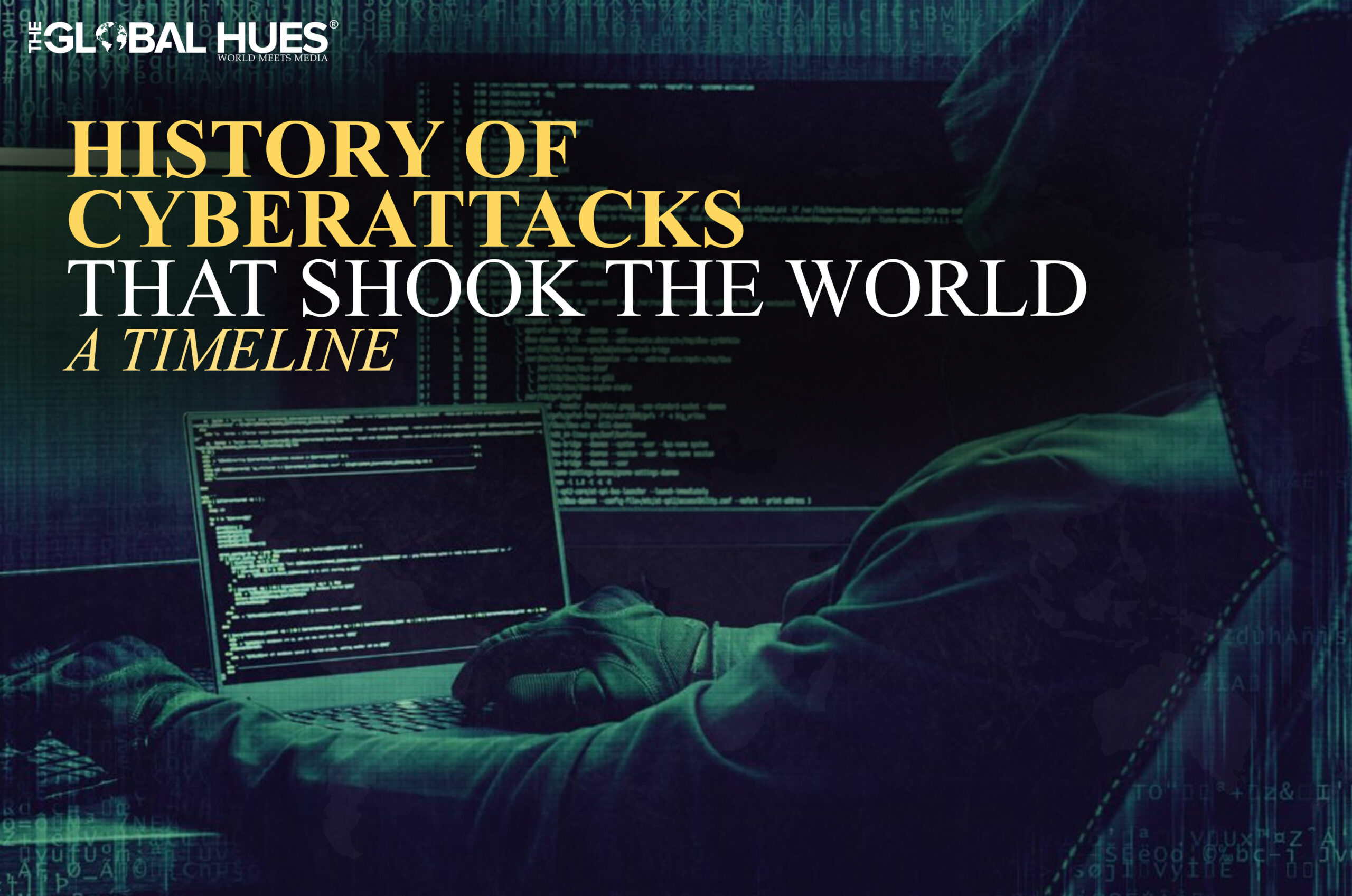“Attacks ranging from state-sponsored infiltration to individual hackers trying to make a political statement, influence outcomes, or designed group heists”
The exact origin of cybercrime is impossible to know but the first known case of theft using a computer network was in 1973 where a local teller in a bank of New York used a computer to embezzle over $2 million. Elk Cloner is one of the first known microcomputer viruses that spread outside the computer system or laboratory in which it was written in 1982 by 15-year-old Rich Skrenta of Pittsburgh. It attached itself to the Apple II operating system and spread by floppy disk.
- March, 1999
Microsoft
The Melissa virus, a mass mailing micro virus was released, it targeted Microsoft Word and Outlook-based systems and created considerable network traffic. Melissa virus-infected computers via email, it spread like a wildfire across the Internet. The virus caused nearly $80 million worth of damages. Bill gates
- August-October, 1999
National Aeronautics and Space Administration
A cyberattack caused a 21-day shutdown of NASA computers. The hacker was 15-year-old Jonathan James, he first penetrated the U.S Department of Defense division’s computers and installed a ‘backdoor’ on its servers. This allowed him to intercept more than a thousand government emails, including the ones containing usernames and passwords, which helped James to steal a piece of NASA software and crack the NASA computers that support the international space station which cost the space exploration agency $41,000 as systems were shut down for three weeks.
- December, 2006
TJX Companies
TJX, the U.S. retailer company identified 45.6 million debit and credit card details were stolen, this happened from one of its systems over 18 months by an unknown number of intruders. As a result, the banks in affected regions had to reissue and block thousands of payment cards. Reports confirmed that the TJX data breach occurred because of weak WEP encryption at two of its Marshalls stores in Miami.
- April, 2007
Estonian Organizations
Estonia, the European country, faced a series of cyberattacks that lasted for weeks. This happened when the Estonian government decided to move the Bronze Soldier from Tallinn’s center to a less prominent military cemetery located on the city’s outskirts. Unprecedented levels of internet traffic took down Estonian banks’ online services, media outlets, broadcasters, and government bodies. Botnet sent massive waves of spam and vast amounts of automated online requests. According to researchers, the public faced DDoS attacks; there were conflicts to edit the English-language version of the Bronze Soldier’s Wikipedia page as well.
- 2010
Iranian Nuclear Facilities
Discovery of the deadly computer worm Stuxnet, this malware’s motive was unlike any other usual cyberattacks, it aimed at destructing the equipment the computers controlled. Stuxnet came with the deadly purpose of damaging Iran’s nuclear infrastructure. It infected more than 200,000 computers, including 14 industrial sites and a uranium enrichment plant in Iran.
- April, 2011
Sony’s PlayStation Network and Qriocity Services
Sony executives witnessed abnormal activity on the Sony PlayStation network, this resulted in the compromise of approximately 77 million PlayStation users’ accounts and prevented users of PlayStation 3 and PlayStation Portable consoles from accessing the service. The outrage lasted for 23 days, Sony invested approximately $170 million to improve the network security, investigate the attack, and cover the expenses of caring for the consumers that had been affected.
- April-September, 2014
Home Depot
Home Depot was the victim of one of the deadliest cyberattacks, 56 million payment cards were compromised along with 53 million customer Email addresses stolen. Criminals were believed to have used a third-party vendor’s username and password to enter the perimeter of Home Depot’s network.
- November, 2014
Sony Pictures
There was a leak of confidential data from the film studio of Sony Pictures. Information about the company’s employees, copies of then-unreleased Sony films, future propositions, and other crucial data were leaked. The cyberattack was carried out by a hacker group named Guardians of Peace, they demanded Sony’s withdrawal of its then-upcoming film “The Interview” the movie was a comedy storyline to assassinate the North Korean leader Kim Jong-un.
- December, 2015
Ukraine Power Grid
Several parts of Ukraine witnessed a power outage and it was not a typical blackout but it was the result of a cyberattack. The information system of three energy distribution companies in Ukraine was compromised. It is the first known victorious cyberattack on a power grid, hackers sent out phishing emails to the power companies, 30 substations were switched off and about 230,000 people were left in the dark for about 1 to 6 hours.
- February, 2016
Federal Reserve Bank of New York
The Bangladesh Bank cyber heist was a theft where thirty-five fraudulent instructions were issued by security hackers via the SWIFT network to illegally transfer around $1 billion from the Federal Reserve Bank of New York account belonging to Bangladesh Bank, the central bank of Bangladesh. Five of the thirty-five fraudulent instructions were successful in transferring $101 million, with US$20 million traced to Sri Lanka and US$81 million to the Philippines. The Federal Reserve Bank of New York blocked the remaining thirty transactions, amounting to US $850 million due to suspicions raised by a misspelled instruction.
- May, 2017
Microsoft Windows Operating System
The WannaCry ransomware attack was caused by the WannaCry cryptoworm, the victims were the users that used the unsupported version of Microsoft Windows and those who had not installed the new security update. This took place through an exposed vulnerable SMB port. The attack originated in Asia and then eventually spread across the globe. In a day more than 200,000 computers were infected across 150 countries, the attack took a toll on private and government organizations. The attack resulted in damages from hundreds of millions to billions of dollars.
Also Read:
- Cyber Security Summit 2023: Empowering Leaders In The Digital Age
- Ritesh Bhatia: Necessity Of Cybersecurity In The Post-Covid World
- Bala Venkatramani: Resolving Vulnerabilities And Loopholes In Cybersecurity
- Rizwan Shaikh: Cybersecurity Expert Administering The Art Of Ethical Hacking
- Reconsidering Cybersecurity As A Business Priority
- Children’s Online Safety & Cybersecurity: A Modern Necessity
- Importance Of Digital Forensics In Maintaining Cybersecurity
- Underrepresentation Of Women In Cybersecurity



